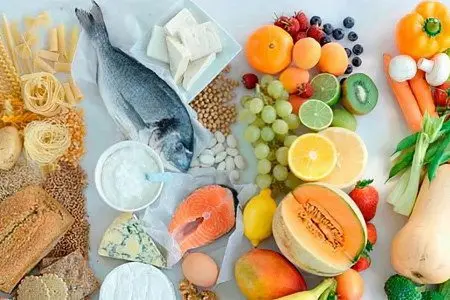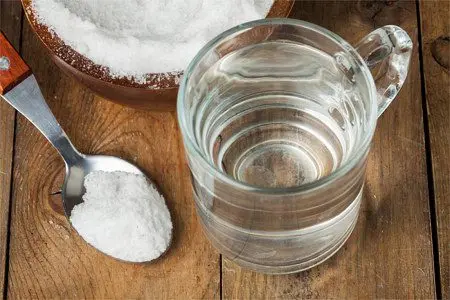
It’s not a secret for anyone that the treatment of any gastric disease involves the observance of a diet by a sick person. This is the only way to normalize the full functioning of the gastrointestinal tract and eliminate many unpleasant symptoms. This rule also applies to reflux esophagitis, an extremely common pathology of the digestive system. The main signs of reflux esophagitis are heartburn, belching, pain and burning sensation in the sternum. Symptoms are usually worse after eating or lying down.
Acid reflux occurs when the internal contents of the stomach enter the human esophagus. This pathological condition is also called gastroesophageal reflux or acid regurgitation, or simply GERD.
But how does it differ from ordinary heartburn? Heartburn is one of the typical symptoms of acid reflux. Most people occasionally experience this condition, so it does not cause much concern to them. But a frequent feeling of heartburn (twice a week or even more often) may indicate the presence of GERD, a chronic type of reflux that can provoke the development of unpleasant complications if left untreated. This pathology is present in 20% of people.
Trigger foods to avoid
Symptoms of GERD may appear after eating certain drinks and foods.
These dietary triggers include:
fatty or spicy foods;
all citrus fruits;
chocolate;
tomatoes;
pineapples;
garlic;
bow;
mint;
tea;
coffee;
various carbonated drinks;
alcohol.
Let’s take a closer look at the products listed above:
Foods high in fat. Eating fatty, fried foods regularly can cause LES to relax. Due to the relaxation of the valve, stomach acid begins to penetrate into the esophagus, and the process of gastric emptying slows down. Since eating fatty foods is a typical cause of reflux symptoms, limiting daily fat intake can help solve this problem.
It is worth limiting the use of the following types of dishes and products:
onion rings, french fries;
fatty dairy products (sour cream, cheese, whole milk, butter, etc.);
fried and fatty pieces of meat;
lard, ham and bacon fat;
some snacks and desserts (potato chips, ice cream, etc.);
creamy sauces and salad dressings, fatty sauces;
any fatty and fried food.
Tomatoes and citrus fruits. Vegetables and fruits contain a large amount of minerals and vitamins, so they are an essential part of a healthy diet. However, some of them, primarily acidic, can cause symptoms of reflux esophagitis.
If you often experience heartburn, eliminate the following foods from your diet:
lemons;
grapefruit;
oranges;
pineapples;
lime;
tomatoes
salsa;
tomato sauce and products containing it (ketchup, pizza).
Chocolate. Chocolate contains methylxanthine, a substance that relaxes the smooth muscles of the esophagus, thereby increasing reflux.
Onion, garlic, spicy food. Many people experience heartburn symptoms after eating spicy foods, especially garlic and onions. If you notice this feature in yourself, exclude these foods from your diet.
Tumbles. Mints, chewing gum, and pure mint can also trigger GERD symptoms.
Some other products. Some people have an individual intolerance to certain foods that usually do not cause heartburn in everyone else. It can be some dairy or flour products (bread, crackers, etc.). If you notice an individual intolerance to a certain food product, try to exclude it from your menu.
[Video] Dr. Evdokimenko – how to get rid of heartburn at home:
Other recommendations and preventive measures

By drinking a glass of boiled cold water before eating, you protect your esophagus by reducing the concentration of stomach acid.
You can prevent excess stomach acid production by eating a couple of raw potato wedges before meals or drinking a quarter cup of potato juice. A small piece of white bread will also work.
It is strictly contraindicated to drink alcoholic beverages before a meal.
Forget about night trips to the refrigerator – they will only provoke another burning sensation.
After eating, it is advisable to sit or take a walk for a while, but do not lie down to rest. This is due to the fact that in the supine state it is easier for the gastric juice to enter the esophagus. If reflux esophagitis goes away with excruciating pain attacks, you need to eat standing up and then do not lie down for at least three more hours.
Drink before going to bed infusion of chamomile. A glass of this simple remedy (1 tablespoon per 250 ml of boiling water) will not only make you sleep better, but will also have an anti-inflammatory effect on the esophagus and stomach.
Tight belts and belts during an aggravation of reflux esophagitis will not serve you well: pressure on the stomach can cause the extruded gastric juice to enter the esophagus.
Meals should be fractional – up to six times a day. Small portions of food should be washed down with boiled water or mineral water without gas, weak tea or sweet juice.
An ideal drink for patients with reflux esophagitis is milk or rosehip infusion. Everyone can cook the latter at home: in a liter thermos, a couple of tablespoons of dry rose hips are brewed for six hours. When the time comes, the medicine is strained and drunk like tea. Apple compote or dried fruit compote is also suitable.
Dairy products must be included in the diet. Pay special attention to yogurt, low-fat kefir, fermented baked milk, cottage cheese. They will help normalize intestinal motility, which will positively affect your health.
Porridge should be eaten lean, giving preference to oatmeal and millet cereals.
Bananas, peaches, plums and pears will help to cope with heartburn with reflux esophagitis. It is best to eat these sweet fruits in the morning on an empty stomach or after breakfast.









